The Donner Party Anniversary
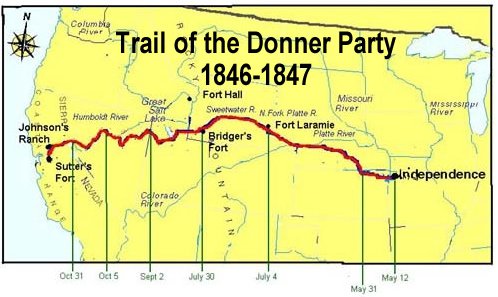
Arguably, Donner Pass is the most important square mile in California with many firsts: •The first wagon trains to California •The first transcontinental railroad •The first transcontinental highway •The first transcontinental air route.
Even with all these firsts for California and the west, the tragic journey of the Donner Wagon Party is probably the most well-known event to surround Donner Pass.
The First Wagon Train
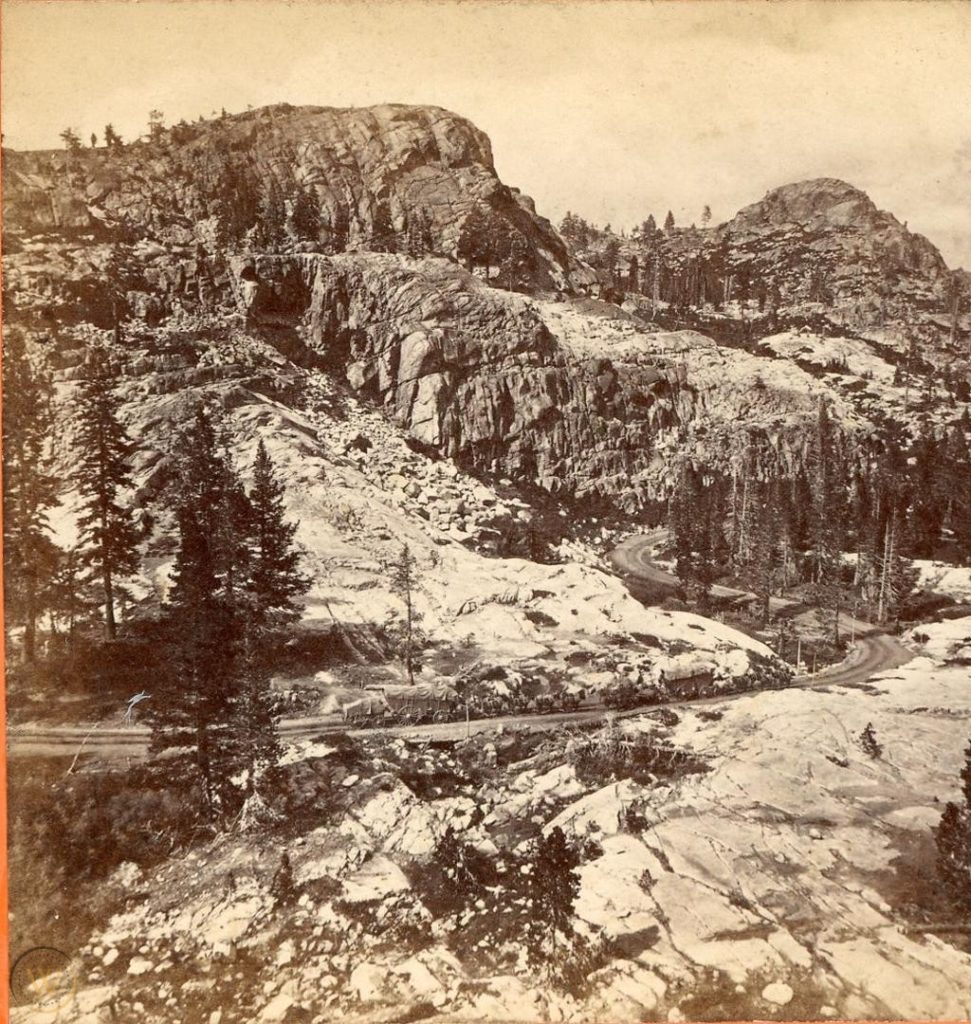
The first wagon train to California was not the Donner Party. They came years later. The first wagon train to reach California, the Stephens Murphy Townsend Party led by 80 year old Caleb Greenwood, came over Donner Pass in 1844. Fifty travelers left Iowa; 52 arrived in Sacramento with the Stephens party, as there were two births along the way.
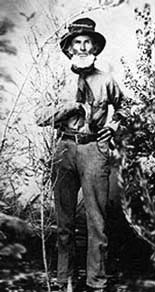
Elisha Stephens was elected captain of the wagon train because he had spent several years as a mountain man and beaver hunter in the Pacific Northwest. He also had skills as a blacksmith. In the Sierra Nevada they encountered snow and on November 14, 1844, the party split. Six of the party, including Elizabeth Townsend, set off on horseback following the Truckee River southward with the aim of reaching Sutter Fort quickly and sending help back. They became the first Americans to step foot on the shore of Lake Tahoe on November 16, 1844.
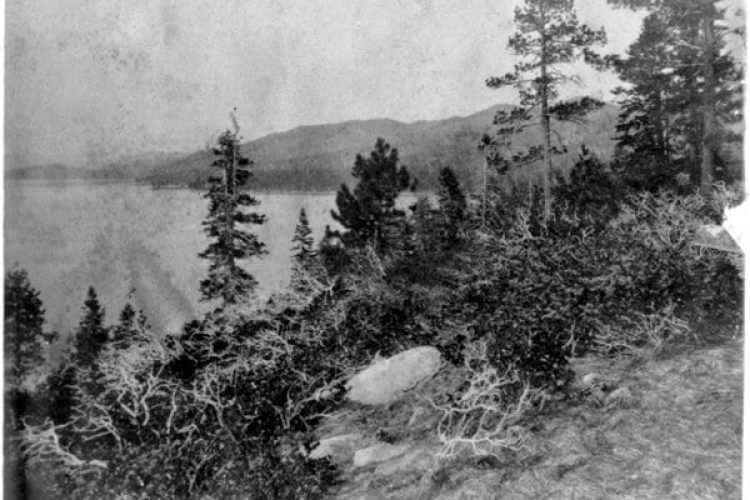
The Donner-Reed Party Sets Out
The Donner Party (sometimes
called the Donner–Reed Party) was a group of American pioneers who migrated to California in a wagon train from the Midwest.
Delayed by a series of mishaps, they spent the winter of 1846–47 snowbound in
the Sierra Nevada. Some of the migrants resorted to cannibalism to survive, eating the bodies of those who had
succumbed to starvation and sickness.
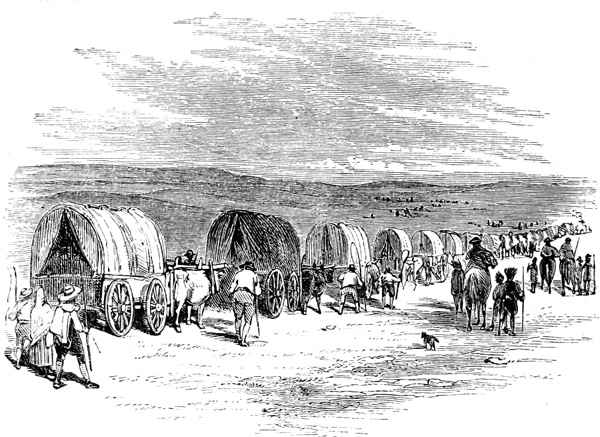
The Donner Party departed Missouri on the Oregon Trail in the spring of 1846, behind many other pioneer families who were attempting to make the same overland trip. The journey west usually took between four and six months, but the Donner Party was slowed after electing to follow a new route called the Hastings Cutoff, which bypassed established trails and instead crossed Utah's Wasatch Mountains and the Great Salt Lake Desert.
Hastings was the fellow who gave the Donner Party the idea to take a “shortcut” that he advocated. That advice was seconded by men at Fort Bridger and the Donners did not get a letter that warned against taking the shortcut. Hastings’ party, with Jefferson, initially took the same route and were a bit ahead of the Donner Party. They got over the Sierra before winter set in. The Donner Party started using the "shortcut" but on advice from Hastings, via a letter posted to a board, diverged from the route in the Wasatch Mountains.
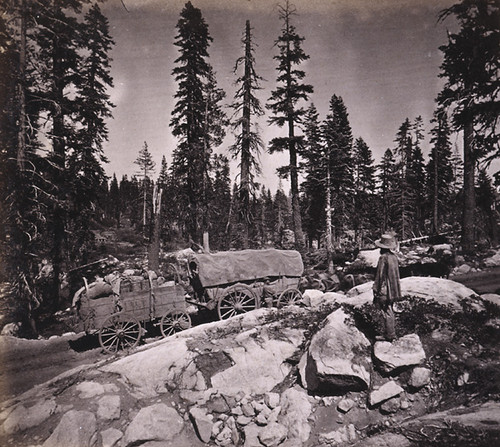
The shortcut was nothing of the sort: It set the Donner Party back nearly three weeks and cost them much-needed supplies. The desolate and rugged terrain, and the difficulties they later encountered while traveling along the Humboldt River in present-day Nevada, resulted in the loss of many cattle and wagons, and divisions soon formed within the group.
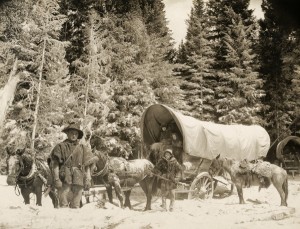
By early November, the migrants had reached the Sierra Nevada but became trapped by an early, heavy snowfall near Truckee Lake (now Donner Lake) high in the mountains. Their food supplies ran dangerously low, and in mid-December some of the group set out on foot to obtain help. Rescuers from California attempted to reach the migrants, but the first relief party did not arrive until the middle of February 1847, almost four months after the wagon train became trapped. Of the 87 members of the party, only 48 survived the ordeal.
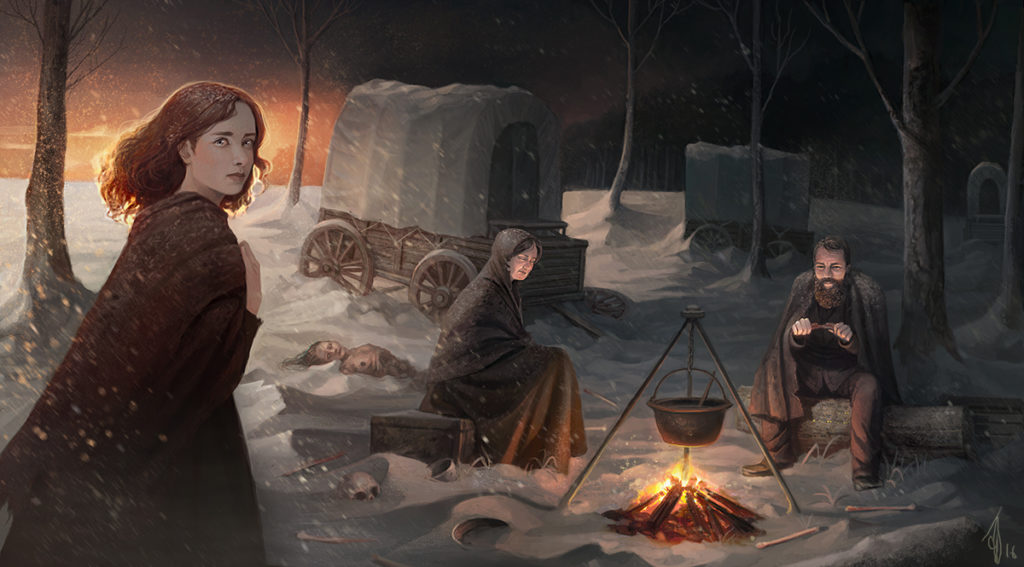
Historians have described the episode as one of the most spectacular tragedies in California history, and in the entire record of American westward migration.
Accounts From the Trail
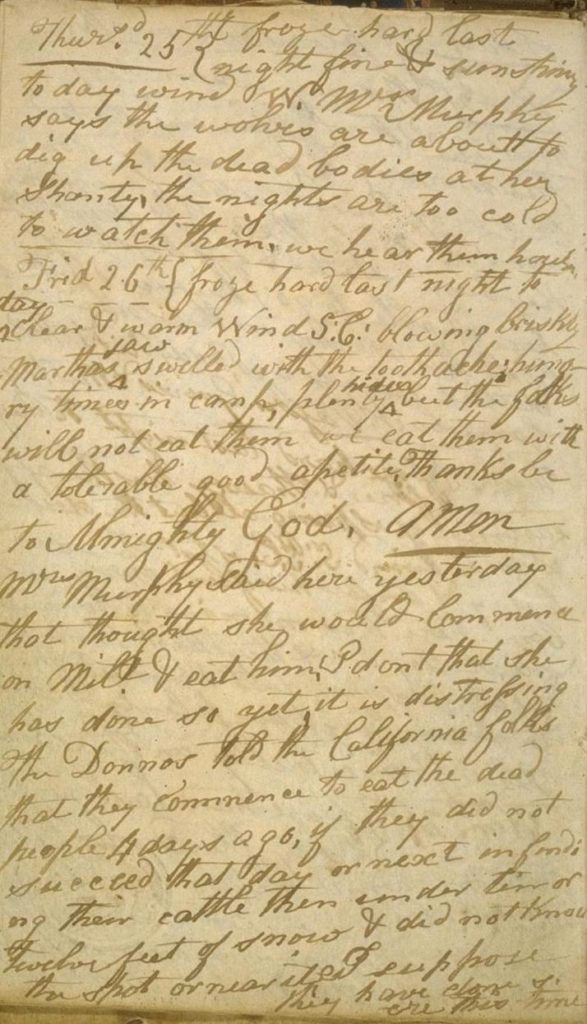
The 28th page of Patrick Breen's diary, recording his observations in late February 1847, including "Mrs Murphy said here yesterday that thought she would Commence on Milt. & eat him. I don't that she has done so yet, it is distressing."
Accompaniment to the Map of the Emigrant Road
T.H. Jefferson printed a map for use by emigrants following his 1846 trip to California. His map was based on the map produced by John Fremont’s cartographer, Charles Preuss. To the map Jefferson added important information and advice for emigrants some of which is below.

T.H. Jefferson traveled to California as an “accompaniment” to the map which is a booklet of advice to emigrants heading for California. It starts off with advice, “The journey is not entirely a pleasure trip. It is attended with some hardships and privation - nothing, however, but that cannot be overcome by those of stout heart and good constitution.”
Some General Emigrant Advice from T.H. Jefferson, 1849
“Upon this journey the bad passions of men are apt to show themselves. Avoid all partnerships if possible.. Provide your own outfit and expect to take care of yourself….. Appoint no captain – make no by-laws. Be quiet; attend to your own business; make no promises.”
You will stay together only as long as you have common interests and no longer. You can stop and join another party any time (not a quote) “It is much better for the emigrants to scatter themselves along the road in small parties, a day’s journey or so apart, than to undertake to travel in a large body. Try to go in company with quiet, peaceable men – avoid braggarts; …Start in April,… but not later than the first of May. Those who go ahead get the best grass and clean camp grounds.”
He explains how to get up a hill if it’s too steep, that one should test out the wagons ahead of time and be practiced with oxen.
Always be on the guard against Indians and take a few “articles of trade.” “The less you have to do with the Indians the better. That said, "Indians like Mackinaw blankets, flint lock guns, powder and ball, knives, hatchets, squaw awls, whiskey, tobacco, beads, vermillion, flints.”
Advice for Emigrants
The first bit of advice is that there are two ways to go across country. One is with a wagon and that takes four to six months. The second is “packing” or going only with horses or mules. That takes sixty to ninety days. Jefferson recommended packing even for women and children. Women should wear, while packing, hunting-frocks, loose pantaloons, men’s hats and shoes, and ride just like men – no side saddles.
Take enough food. You can’t count on game.
Carry nothing but provisions and what’s absolutely necessary
Packers Should Take:
Bring a stake that “will hold the wildest horse”
You can get horses shod at Ft. Laramie or Ft. Bridger for $5
Take a sleeping tent 7’ x 4’ x 5’ Don’t paint it.
Oil cloth the floor of the tent – dip in water and paint with linseed oil.
Take an umbrella for desert sun.
Wagoneers Should Take:
Take a “farmer’s wagon” of seasoned wood – he gives a lot of design considerations
Don’t paint it.
Take a spare cotton cloth to use as an awning. It provides “agreeable shade for a lunch or siesta…”
Mackinaw blankets – the very best, thick and heavy
Sack coat and pantaloons
Deer skin hunting shirt and pants
Duck trowsers
Striped twilled cotton or hickory shirts Red flannel shirts, Cotton socks Stout pegged shoes or brogans – broad soled and large
Stout white felt hat
One should not start with wheels about which there is a “particle of doubt” or he’ll “meet with trouble and vexation.” Wheels must be made of the very best seasoned wood, by a superior workman, and ironed in the driest weather.”
Do not take more than 1,000 or 1,500 lbs of weight.
Two oxen is good but three is better.
Don’t take loose cattle except a milk cow. If she becomes troublesome kill her and eat her.
Drive everything before your wagon. Following in the dust causes an animal to fail rapidly.
Wash your oxen’s necks with water and sometimes soap each day. Don’t grease their necks.
If the ox’s neck gets sore wash with urine and powder.
Oxen go 2 mph and 15 miles per day or so.
It’s better to travel every day.
Start after breakfast. Stop an hour at noon. Camp at 4 PM.
Take lots of bread stuff. “this is the staff of life”
Don’t take just fine flour. It’s not good for the bowels and is unwholesome. Take “unbolted wheat flour and Indian corn meal.”
Take 200 lbs of bread per man (packers take 100 lbs.) Take more if you can. “it becomes valuable as gold during the latter part of the journey.”
Don’t take fat bacon. Take lean ham and smoked beef (“bagged and limed)
Food to Take:
Smoked salmon, herring, sardines, preserved meats, and soups in tin.
Cheese A little olive oil and butter.
Meat and grease packed in tin.
Rice, beans, peas, butter crackers, soda biscuits, ship bread, dried fruit, …
Sugar house syrup (in tin can), sugar, vinegar, pickles, pepper, salt.
Tea, ground coffee
“Those determined to annoy themselves preparing coffee, want a coffee-mill screwed to the body of the wagon. A water drinker fares the best, and is saved a great deal of trouble; cooking is an annoyance.”
“Buffalo meat is sweet and wholesome; cow meat is the most tender.” The best way to cook it is to run a stick through the meat, plant the stick in the ground at an angle to the fire and “mountain roast” it. Cut slices and hang the slices over the fire. The meat will keep the entire journey.
“Good bread is the most important and best food to be had upon the journey –“ Few know how to make it though. Don’t use grease.
Bake bread, after kneading it well, in the form of a biscuit.
Packers should carry bread in goat-skin sacks which can be used for water later.
Wagoners should carry bread in cotton canvas sacks with circular bottoms 2’ x 2’. They stand upright.
Use buffalo chips for fires.
Bring a single-barreled rifle $25 and a brace of U.S. holster-pistols
One to five pounds of powder Split and ribbed percussion caps Bullets
Bullet screw, ladle, lead, friction matches, tin cans, powder-flask; oil-cloth gun-case
Patent leather drinking cup
Spy glass
Various useful articles to take:
Knife, whetstone, axes, hatchet, sickle, spade, saw, nails, tacks, needles, pins, thread, thimble, scissors, wax, sail needles, twine, palm, shoe leather, pegs, awls, hammer, king bolt, linch pins, staples, iron ring. Rope, cotton cloth, camp stool, bee’s-wax, tallow, spare chain, soap, sperm candles, tin lantern, camp-kettle. Tin ware – pail, plate pan, mug, washbowl, coffee-pot small water-keg iron spoon, knife and fork, herbs, “ a few simple, useful medicines”
Sources:
https://en.wikipedia.org/wiki/Donner_Party
https://www.history.com/this-day-in-history/donner-party-rescued
http://donnersummithistoricalsociety.org/PDFs/amgensummary5-11.pdf
http://donnersummithistoricalsociety.org/pages/bookreviews/CaliforniaTrailMap1849andAdvice.html
https://en.wikipedia.org/wiki/Stephens-Townsend-Murphy_Party

 Market Stats
Market Stats Listing Watch
Listing Watch My Home Valuation
My Home Valuation